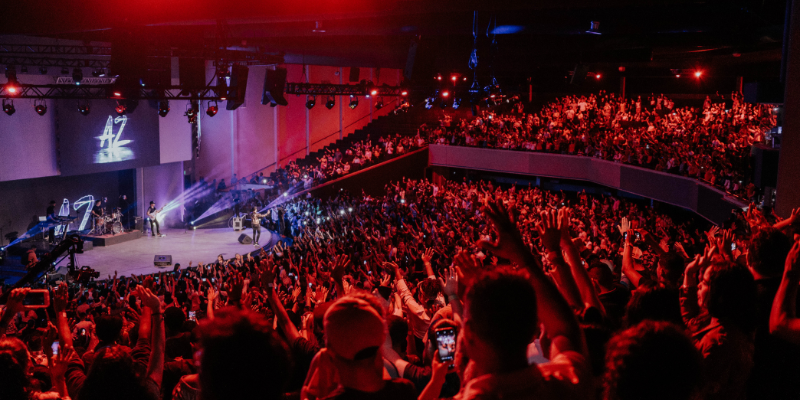Over the years, theaters have evolved in terms of structure, stage arrangements, and internal layouts. Different stage arrangements are selected depending on how the story needs to be conveyed to the audience.
Staging along with stagecraft elements and components are crucial for complementing every aspect of the show. Also, there are several types of stages to cater to different events.
What is Staging in Theater?
Staging in theater is the process of selecting, designing, or modifying the performance space in accordance with the play or event.
It enhances the visual details by modifying or positioning the scenic background, props, costumes, lighting, and sound effects.
The first thing that captures the attention of the audience is the stage set, the physical object that gives the performance its own identity and depicts the world of the play.
Moreover, the detailing and designing of a theater stage differ from one playwright to another and according to the literary period.
Types of Staging
Whether plays are staged to a dozen audience members or 2000, staging decisions should be consciously made to catch the attention of the audience. There are multiple types of staging, each one allowing a different perception.
1. Proscenium Stages
It is one of the most widely used stages in drama and theater. These stages have an architectural frame, referred to as proscenium arch, albeit not always necessarily arched in shape.
Proscenium arch stages are deep, often raked, and allow the audience to see the show from one direction rather than multiple angles.

2. Thrust Stages
This stage is surrounded by an audience on three sides with the fourth wall serving as a backdrop.
These stages are made either rectangular or square for actors to perform on multiple sides.
The thrust stage gives the performer the opportunity to play in the middle of the crowd while standing in the background to give the character depth.
It is specifically designed to increase the interaction and intimacy between the performers and the audience.
3. Theater In-The Round
As the name suggests, these stages have a central performance area surrounded by an audience on all sides. However, the seating arrangement is not ’round’, instead, it is in a square or polygonal formation.
Performers enter through aisles between the seating and have to play to everyone and ensure each member gets an equal view.
4. Traverse Stages
Traverse theater staging is similar to a ramp walk setup, with audiences sitting on two sides.
This kind of staging is selected for plays that show a rivalry story between two parties.
Performers should be carefully positioned to see both sides get an unobstructed view.
5. Hippodromes
These stages have a central circular area enclosed by concentric tiered seating. It is similar to circus arenas and the audience is separated from the performers through deep pits and low screens.
6. Black-box
These types of theatre allow flexible performance spaces and seating arrangements. The creative team can mold the stage in a number of different configurations for several kinds of plays to be presented.
7. Open Air
Open air or amphitheater can have traverse, thrust, in-the-round, or in a proscenium arch style staging. These theatres do not have a roof or only audience seating is covered.
